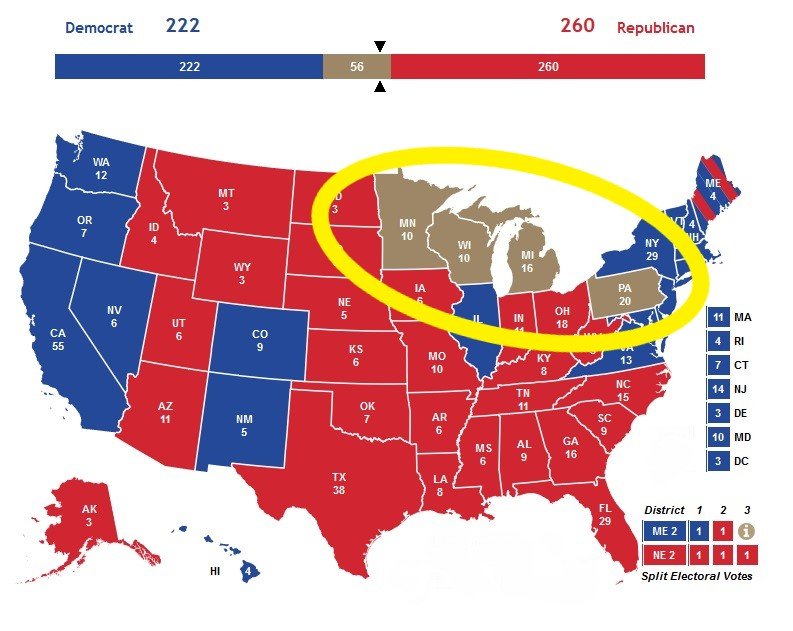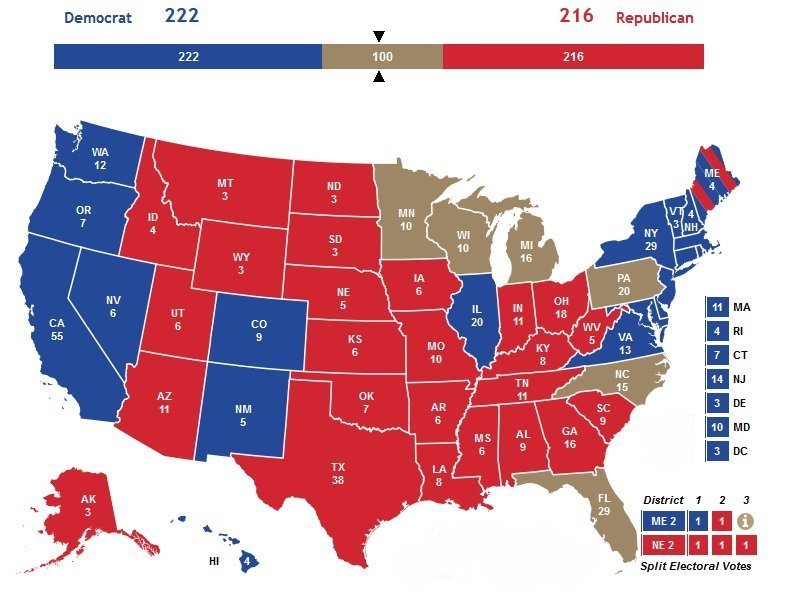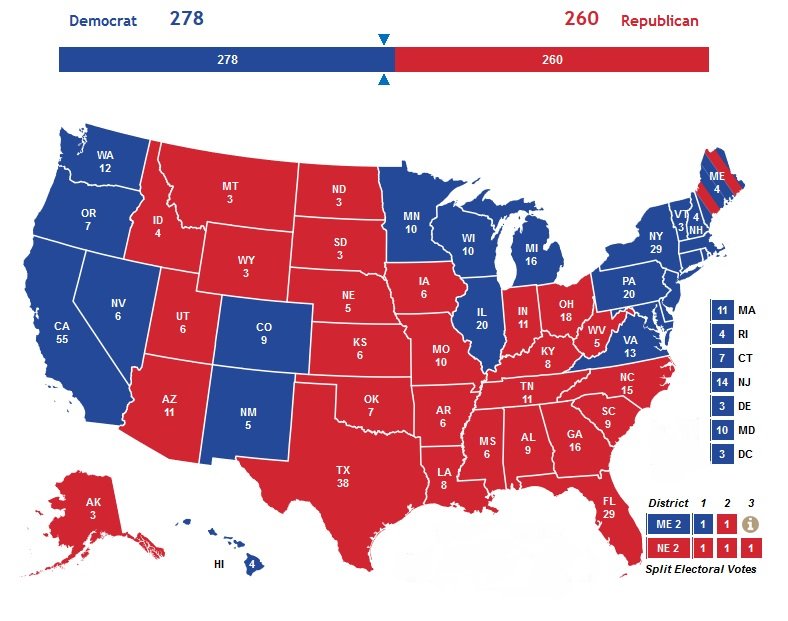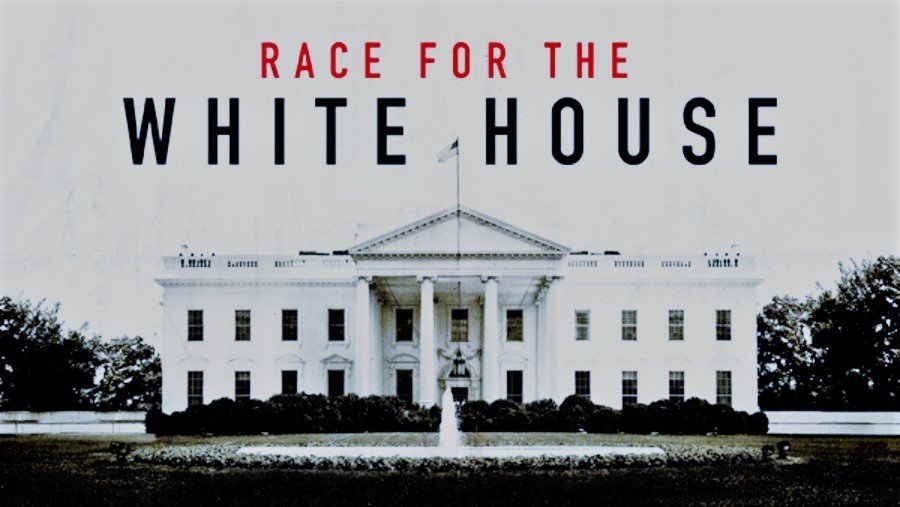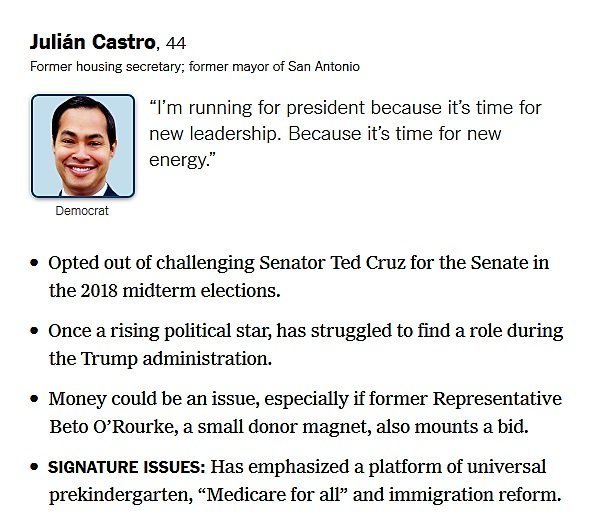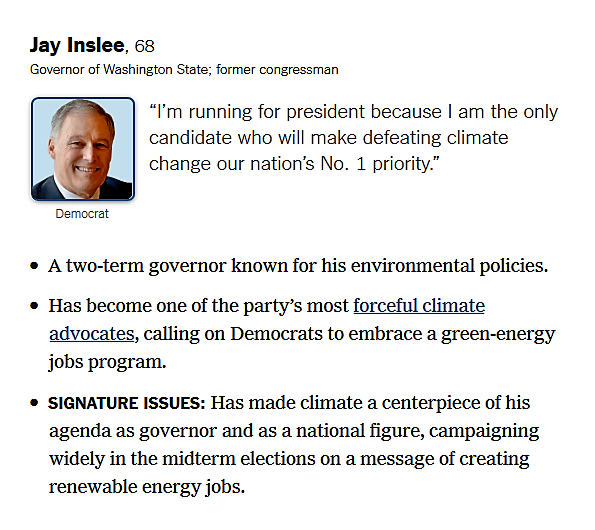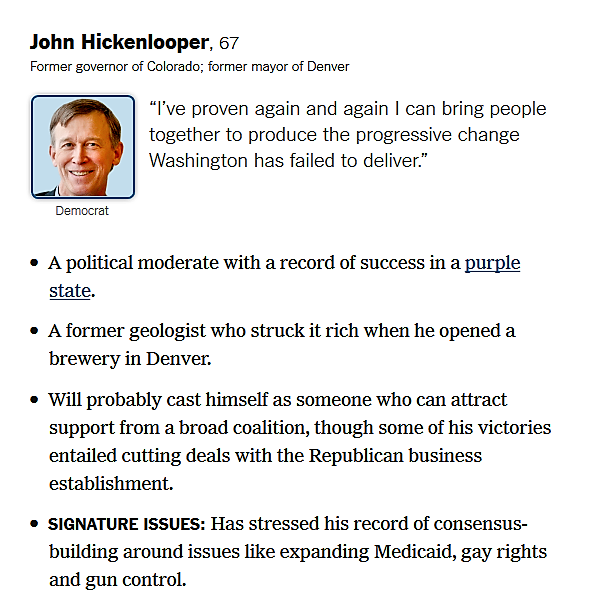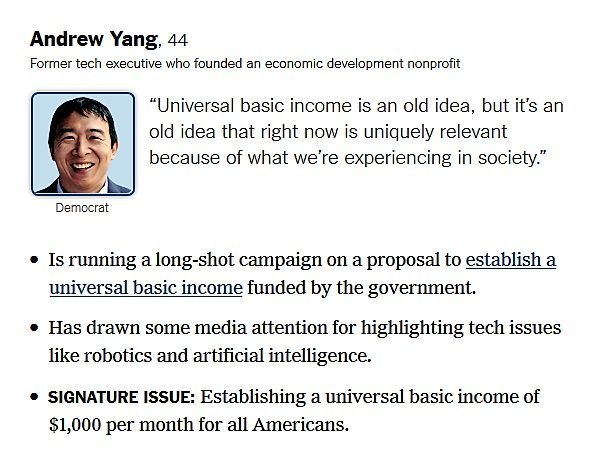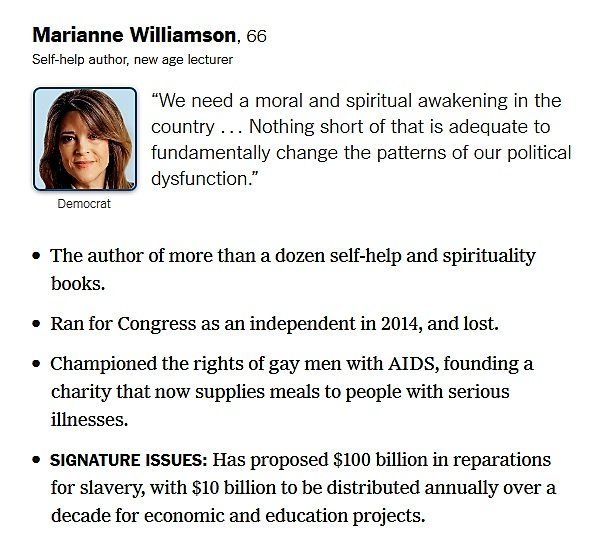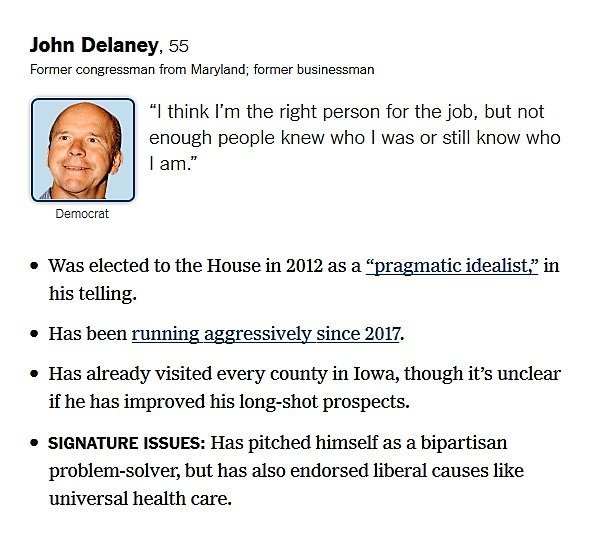In just 600 days, Americans will go to the polls and determine whether Republicans should continue running the White House, or decide to turn to Democrats for a different direction.
Starting today, JimHeath.TV will be evaluating where the presidential race stands in all 50 states, with a special emphasis on truly competitive battlegrounds.
We will present regular updates over the course of the upcoming campaign.
Our first look at the electoral college map shows the vast majority of red/blue states continue to be dug into their partisan leanings.
States that have voted red since 2000 are likely to continue that trend, the same for blue states.
Here is a first look at the electoral map that we see 600 days out:
This map shows the Democratic nominee slightly leading President Trump 222 electoral votes to 216.
However, in 2016 Trump won five of six of the states remaining: Florida, North Carolina, Pennsylvania, Michigan, and Wisconsin.
In Minnesota, Hillary Clinton held off Trump by just over 40,000 votes (Obama beat Romney there four years earlier by over 226,000 votes).
We believe these states will be key for both candidates next year, and where a vast majority of money and resources will be spent.
A few notes:
- You may wonder why we’re showing traditionally battleground Ohio red at this point.
Based on Ohio’s midterm election (which was a complete wipeout for Democrats, with the exception of the reelection of Sen. Sherrod Brown) we believe the GOP now has a clear edge.
Ohio has the longest streak of voting for the winning presidential candidate, dating back to 1964, and it would be a mistake for Democrats to completely write it off in 2020.
That said, Trump has exhibited a lot of appeal in certain blue areas of the state, and he carried Ohio easily even while being publicly opposed by former GOP Gov. John Kasich.
- We have also stopped short of putting Virginia (blue), Colorado (blue), Nevada (blue), Arizona (red), Georgia (red), and Texas (red) in the undecided category.
That will obviously change as the campaigns get going and the polling shows each of those states (likely) to become battlegrounds.
This far out from the election we’re comfortable designating them blue and red.
- We are also assuming 600 days out that Donald Trump will be at the top of the GOP ticket.
His reelection is already in full gear, and the Republican National Committee has already raised a lot of cash for 2020.
As we all know, a lot can happen in 6 days, let alone 600.
But our assumption is that Trump will lead the GOP ticket next year.
Where The Fight Will Be:
With Trump on the top of the ticket, let’s assume he holds on to both right-leaning Florida and North Carolina (he won both in 2016 but Democrats are determined to flip them).
Under this scenario, Trump would now have 260 electoral votes – 10 short – and if he wins any of the remaining rust belt states he’s reelected.
This is how thin the needle could be for Democrats, and the reason why someone from the Midwest should be automatically on the ticket (hello Sherrod Brown).
If The Blue Firewall Reemerges:
If the Democrats can take back their once dependable firewall of Pennsylvania, Michigan, and Wisconsin, and hold Minnesota, their nominee would beat Trump 278 to 260 electoral votes.
Results of last November’s midterm, and Trump’s averaged poll numbers, show Democrats have a shot at running the table in the rust belt.
Remember, Trump finished in 2016 with 304 electoral votes, despite losing the national popular vote by nearly three million.
CANDIDATES GUIDE 2020
ANNOUNCED CANDIDATES AS OF 3/14/2019
PROFILES OF THE CANDIDATES (In Order Of Likelihood Of Nomination According To JimHeath.TV):
DEMOCRATS:
REPUBLICANS:
